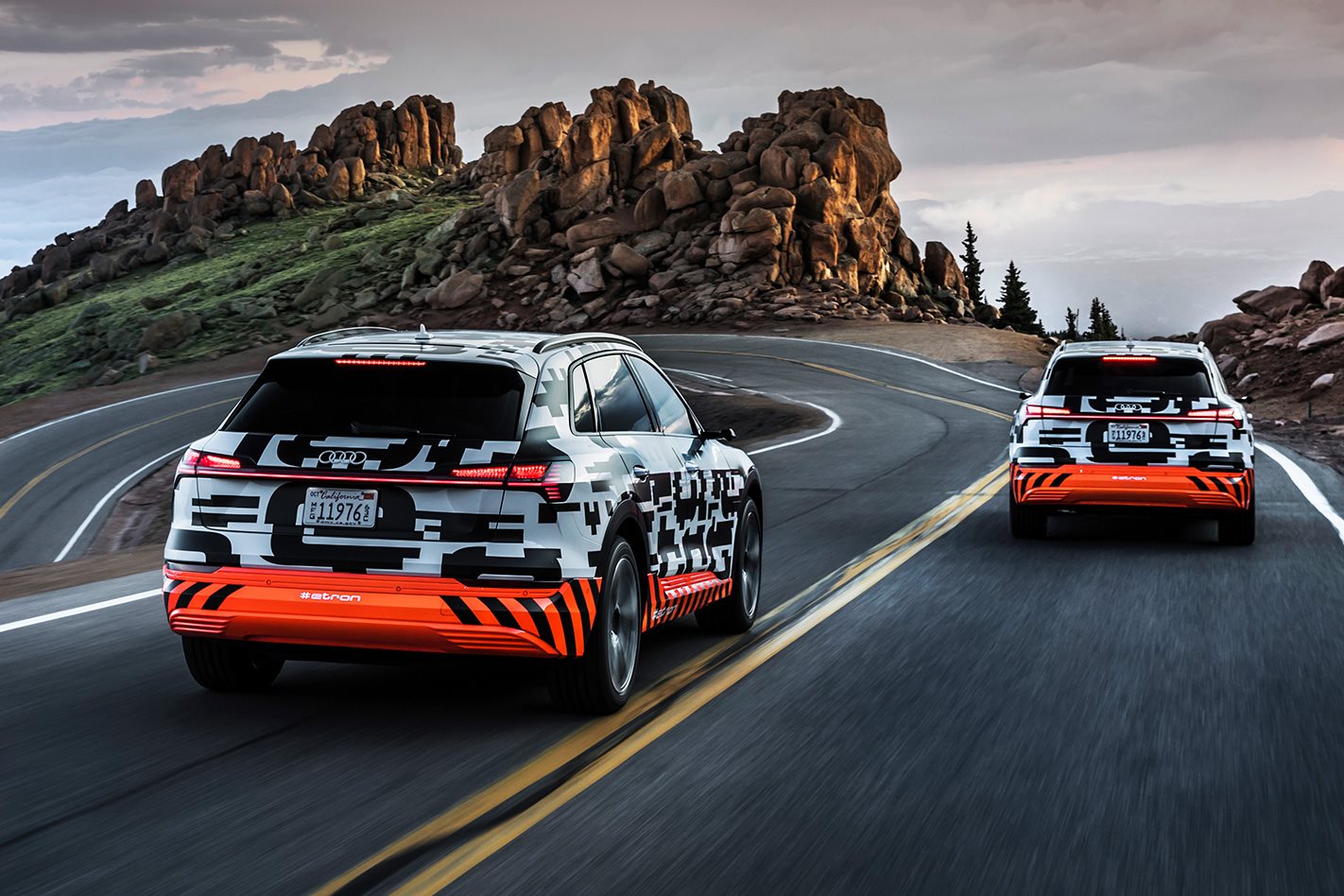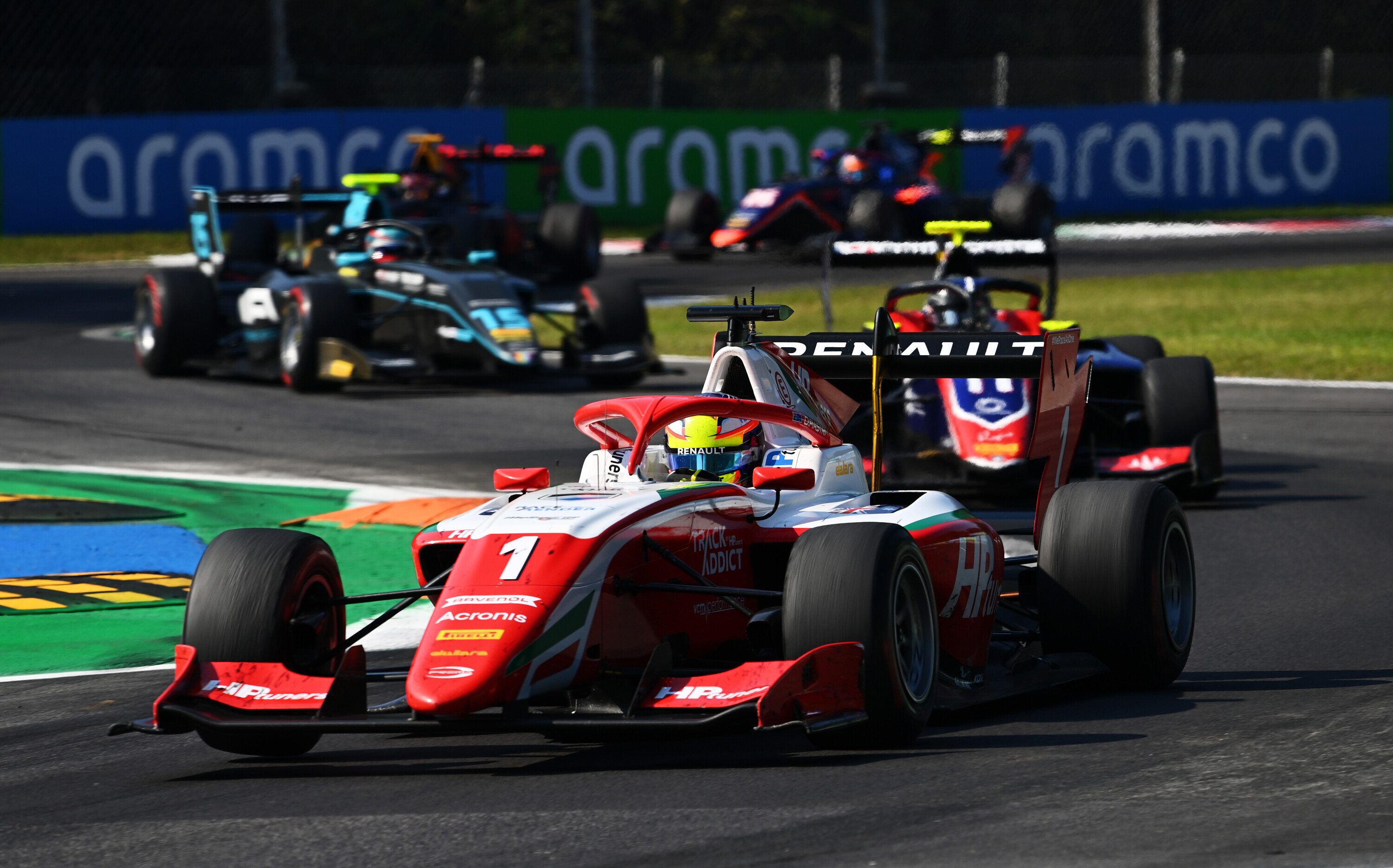TO MANY people, this rust-red spire of arid rock about 100km south of Denver isn’t particularly special. There are 52 other mountains just like it in the state of Colorado alone, all of which peak above 14,000ft (4267m). In mountaineering parlance they’re simply called the ‘Fourteeners’.
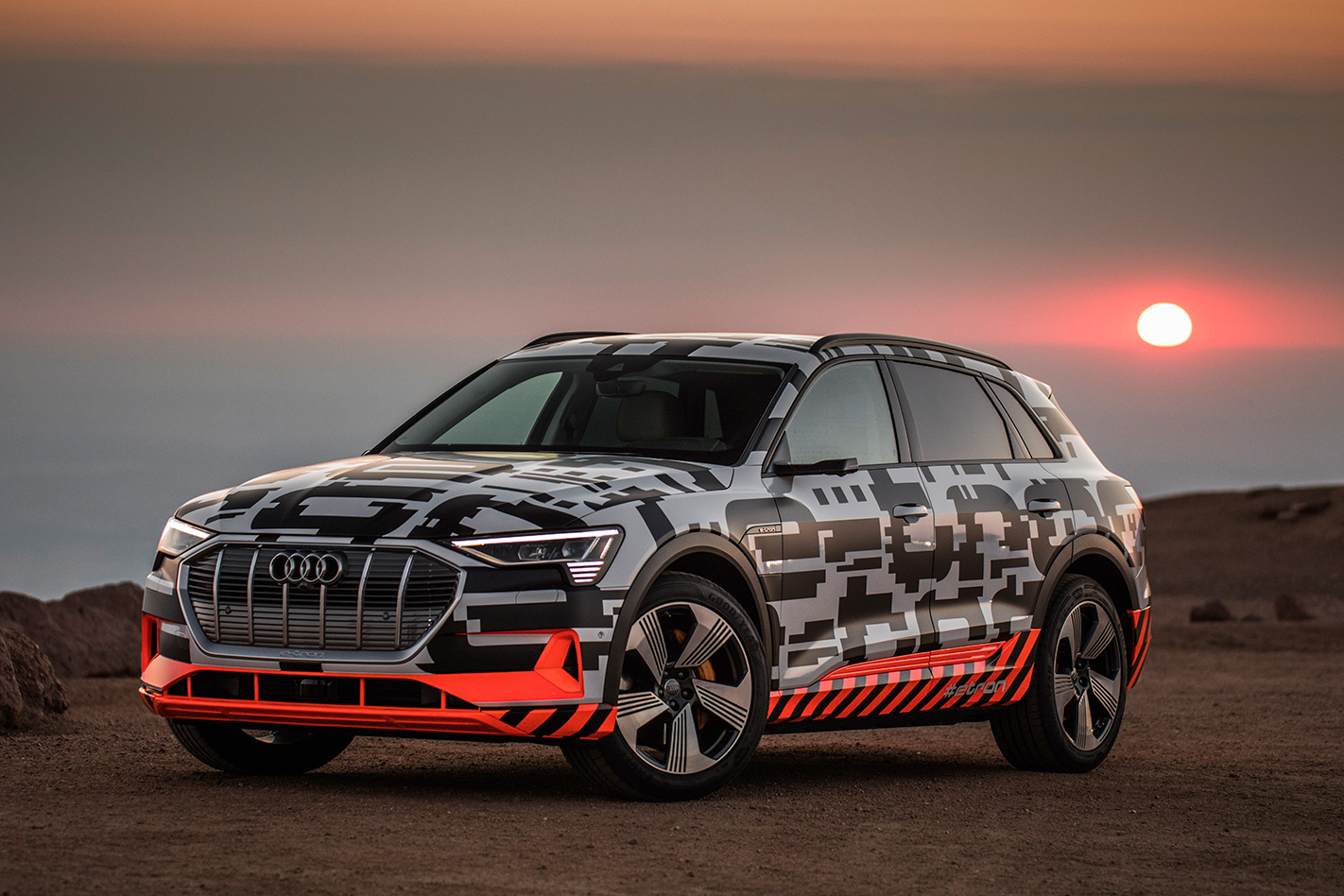
But to those of us who know better, Pikes Peak is hallowed. For more than a century, madcap manufacturers and racing drivers with no self-preservation instinct have been attempting to tame its 31km ribbon of treachery that pitches upward to a finish line 4302m above sea level. The summit is almost twice as high as the tip of Australia’s premier peak, Mt Kosciuszko. Standout performances at the Pikes Peak Hill Climb have become the stuff of motorsport mythology.
Audi has taken overall victory on three occasions, all in a row, bookended by legendary wins for Michele Mouton in 1985 and Walter Rohrl in 1987. That success helped establish the credibility, and indeed the legend, of Audi Quattro.
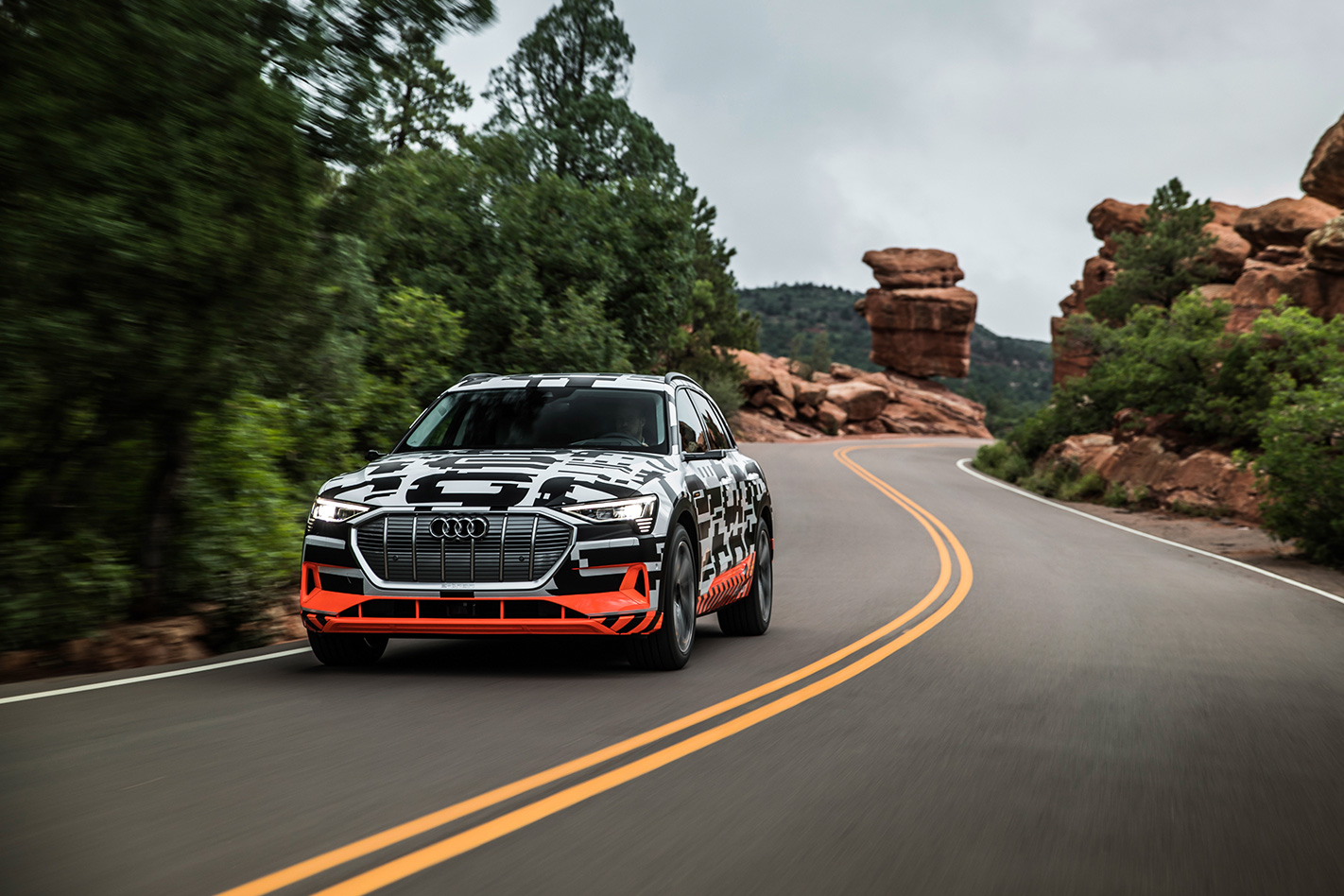
But the Audi I’m about to experience here has no legacy whatsoever. Its history is yet to be written.
This is the Audi E-Tron, the German brand’s first all-electric production car. Or at least, it will be. This particular car is a prototype; a late ‘pre-series’ vehicle that’s largely representative of the finished product due to make a public debut in mere weeks, sans high-vis exterior disguise.
Audi has four of these prototypes in Colorado Springs, and at least 200 other examples shuffling about in various corners of the globe, manned by the departments charged with its development. This quartet has been gathered to give a small group of international media a peek behind the curtain at the current state of Audi’s electric vehicle program.

A special permit means the E-Tron we’re sampling can be driven on public roads despite its experimental parts that aren’t yet road legal. Things like cameras and screens that sit in place of conventional wing mirrors. The permit dictates only company employees can take the wheel, so we won’t be driving today. Instead we’ll be chauffeured by Oswin Roder.
Roder is one of the engineers responsible for the E-Tron’s electronic chassis control. He has spent months at the Nurburgring since becoming involved with the program in its early concept stages about three years ago, and he is clearly passionate about Audi’s electric future. We’ve been awake since 4:00am in order to get up and back before the road is opened to tourists, yet Roder is bright-eyed and impatient to jump in the car and get to work. Or maybe he’s just cold.
A shuttle drops us at the top where the E-Tron awaits. It’s summer in Colorado and the midday heat is extreme, but up here at this hour it’s barely above freezing. It takes me a moment to get my bearings and take in the utterly breathtaking view. In a bid to warm up I jog across the carpark to a lookout point about 30 metres away. By the time I reach the railing I’m panting for breath like a chain smoker. Air pressure at this altitude means the effective oxygen level is dramatically reduced; partial pressure here is only about 60 percent that of sea level. It’s one of the reasons EVs are so comparatively potent up here. Oxygen density matters far less than it does for combustion engines, especially turbocharged ones. But that isn’t important today. All we have to do is drive down.

We clamber into the E-Tron and take shelter from the elements. The airy cabin is reminiscent of Audi’s current SUV crop, with its overall dimensions sitting somewhere between the Q5 and Q7. I remind myself that this is a prototype, but there’s no need to. The interior fitout is exquisite, and equipped with cutting-edge tech including the A8’s touchscreen-heavy MMI infotainment system. There are Bang & Olufsen logos on the speaker grilles, a colour head-up display, and premium leather trim. It’s a properly luxurious experience, and Roder knows what I’m about to do next before I do it.
“We must leave the seat heaters off,” he says, with a clear objective on his mind. To succeed today we need to conserve charge in the battery and recuperate as much potential energy as possible during our downhill run. We’re to do that using the E-Tron’s state-of-the-art integrated brake control system, which switches the electric motors to generators and converts kinetic energy into electric charge. The ultimate aim is to beat three other E-Trons doing the same. Seat heaters won’t help us.

The E-Tron sits on a version of Audi’s modular and ubiquitous MLB Evo platform. Roder explains the architecture wasn’t designed with an EV in mind, and had to be adapted to accept an asynchronous motor on each axle, the rear slightly larger than the front, and a physically massive 95kWh battery built into the floor between them. All of it is made by Audi.
Until now only morsels of technical information have been shared by Ingolstadt, but Roder seems willing to go off-script. He confirms the E-Tron’s outputs of 265kW and 561Nm, and a Sport mode boost function that lifts them to 300kW and 665Nm for eight second bursts. Its real-world range is more than 400km.
These figures put Audi’s first EV slightly behind rivals already in the market, including the Tesla Model X and Jaguar I-Pace, but Roder brushes off the criticism. “The performance of this car is still very good. Acceleration [0-100km/h] is under six seconds, and we have a big advantage in cornering. This was a high focus.”
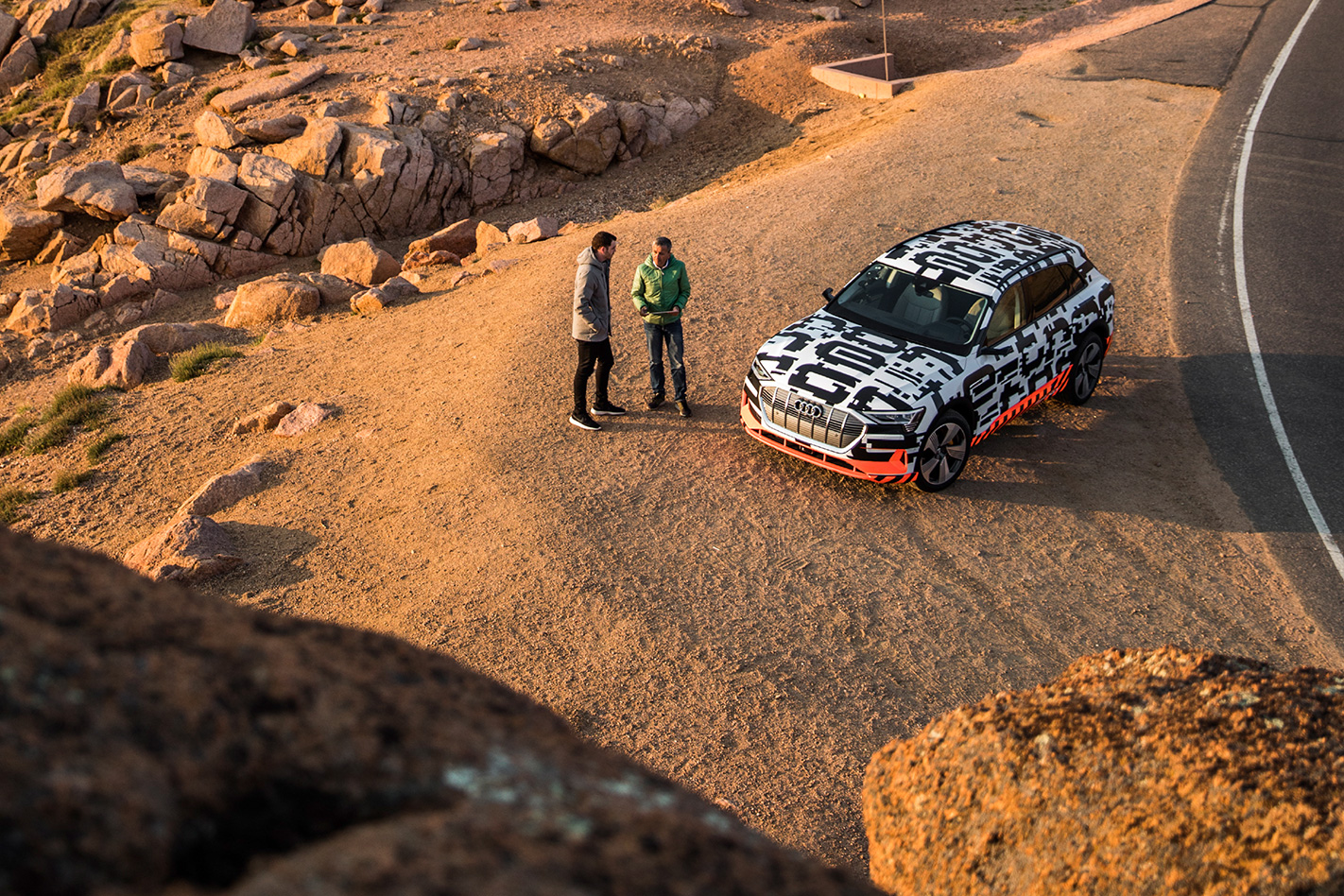
There are EV character traits that help this cause, such as a low centre of gravity, but there are disadvantages as well, most notably weight. All told, E-Tron is around 2500kg, with the battery contributing approximately 700kg to that. It’s a lot of mass to manage.
“We use progressive [variable] steering. We have a conventional ratio for driving ahead, and when it comes to a corner it gets more direct. This has a big influence on the car feeling agile and light.” I have to take his word for it. For now, we’re talking brakes.
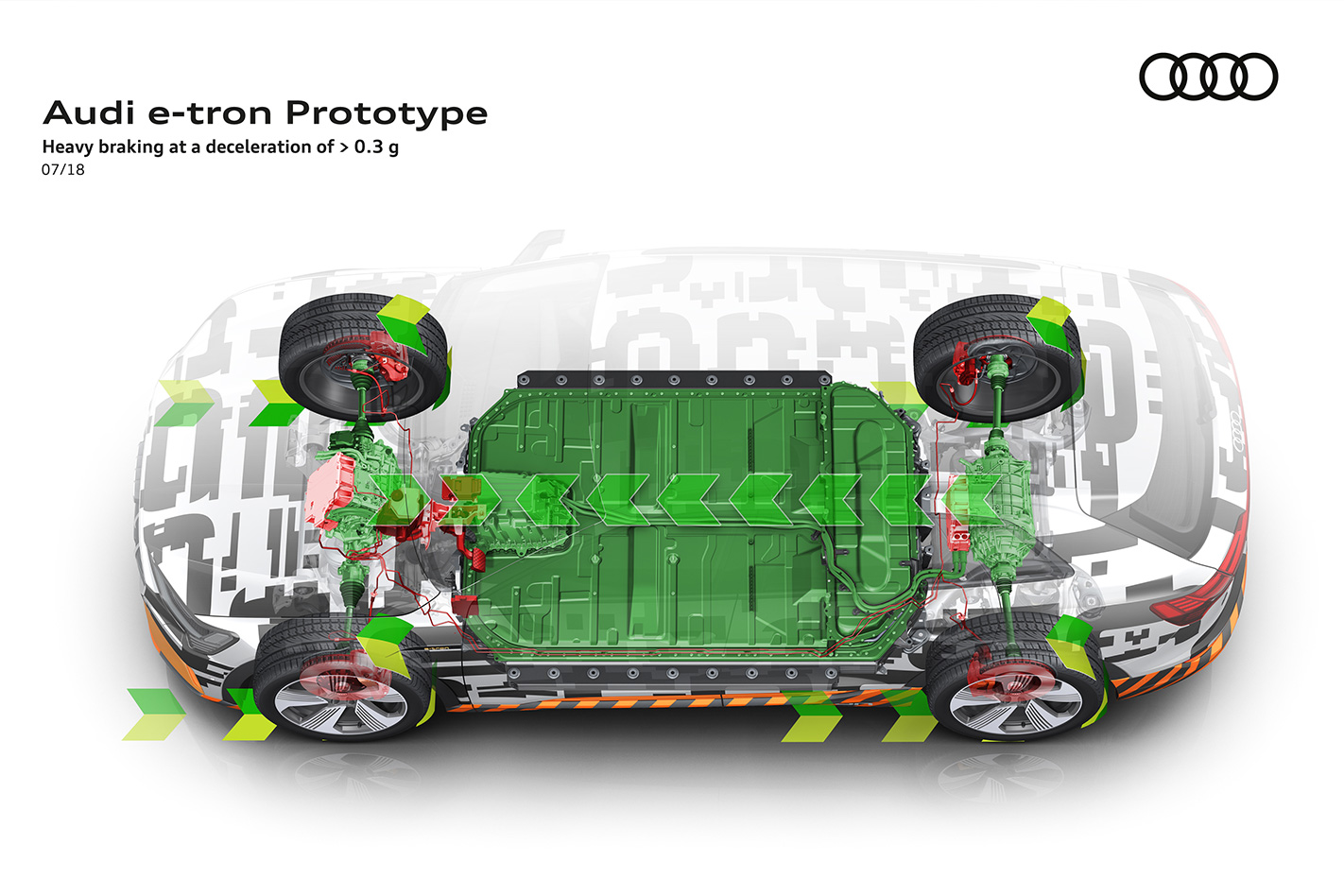
It’s easy to underestimate how central recuperation is to the driving experience of an EV, and how significant the influence will be on the way we drive in future. When you realise Audi has changed the function of the E-Tron’s paddle shifters to instead cycle through its three levels of regeneration, it starts to become apparent.
At the low end the system mimics engine braking and recuperates during coasting. At its strongest the E-Tron can be driven with one-pedal. As much as 90 percent of braking scenarios can be handled by the motors, meaning it is constantly recharging. The drivetrain can recuperate energy up to 0.3G of deceleration before the hydraulic brakes need to assist, which covers almost everything short of an emergency stop.
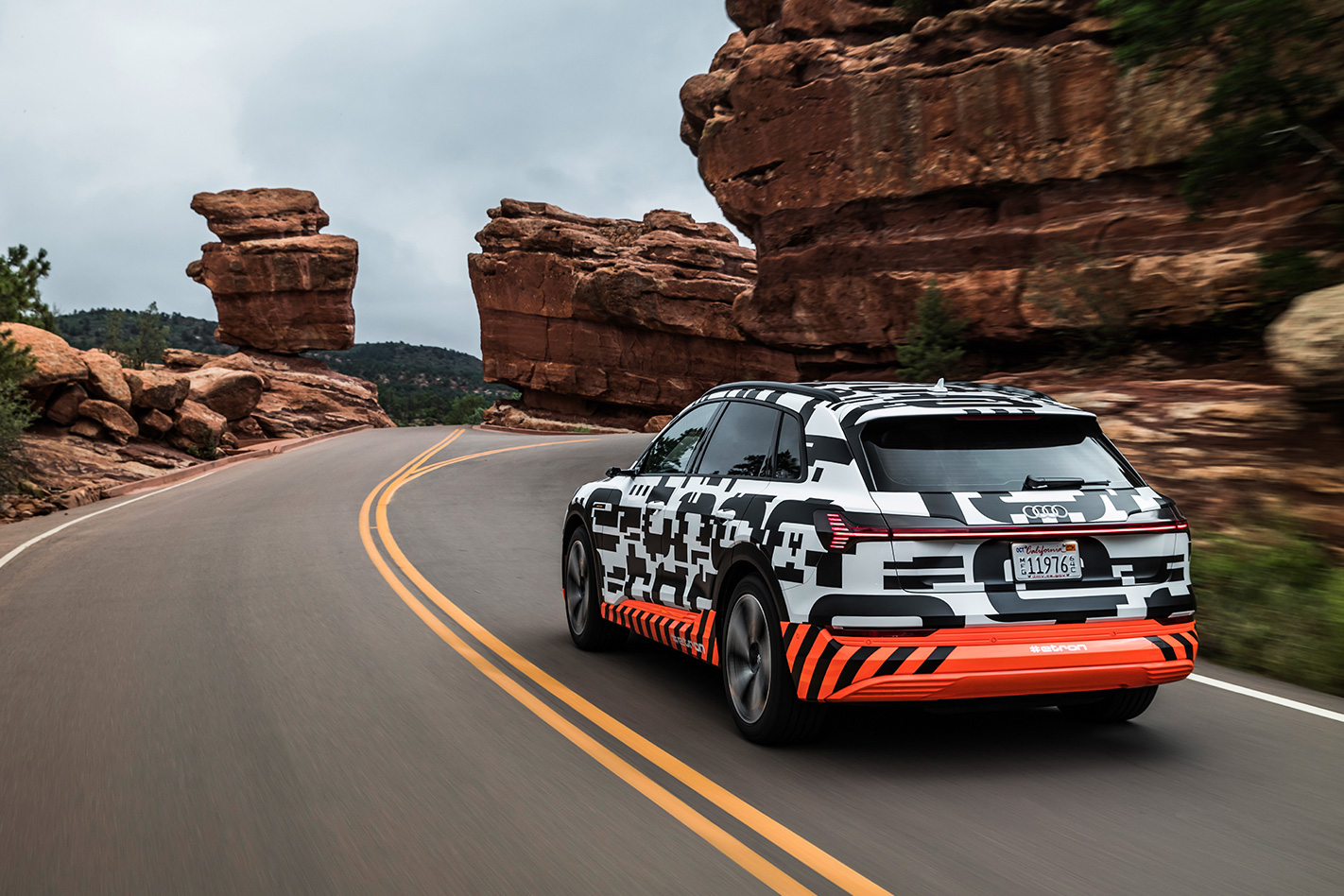
Up to 220kW of energy can be fed back into the battery by the system, which is far more than the 150kW a 400-volt fast charger is capable of when the E-Tron is hooked up to a socket. This is not the first EV energy recovery system, but it’s almost certainly the most efficient.
Pikes Peak drops away in front of us, the steepest sections plummeting downwards at 13 percent, which is more than a metre of fall for 10 metres travelled. After about 11km of riding the brakes and almost 1000m of descent we’re stopped by park rangers at a static checkpoint. Here, attendants carry out a mandatory test on every vehicle leaving the summit using a device that measures brake temperature.
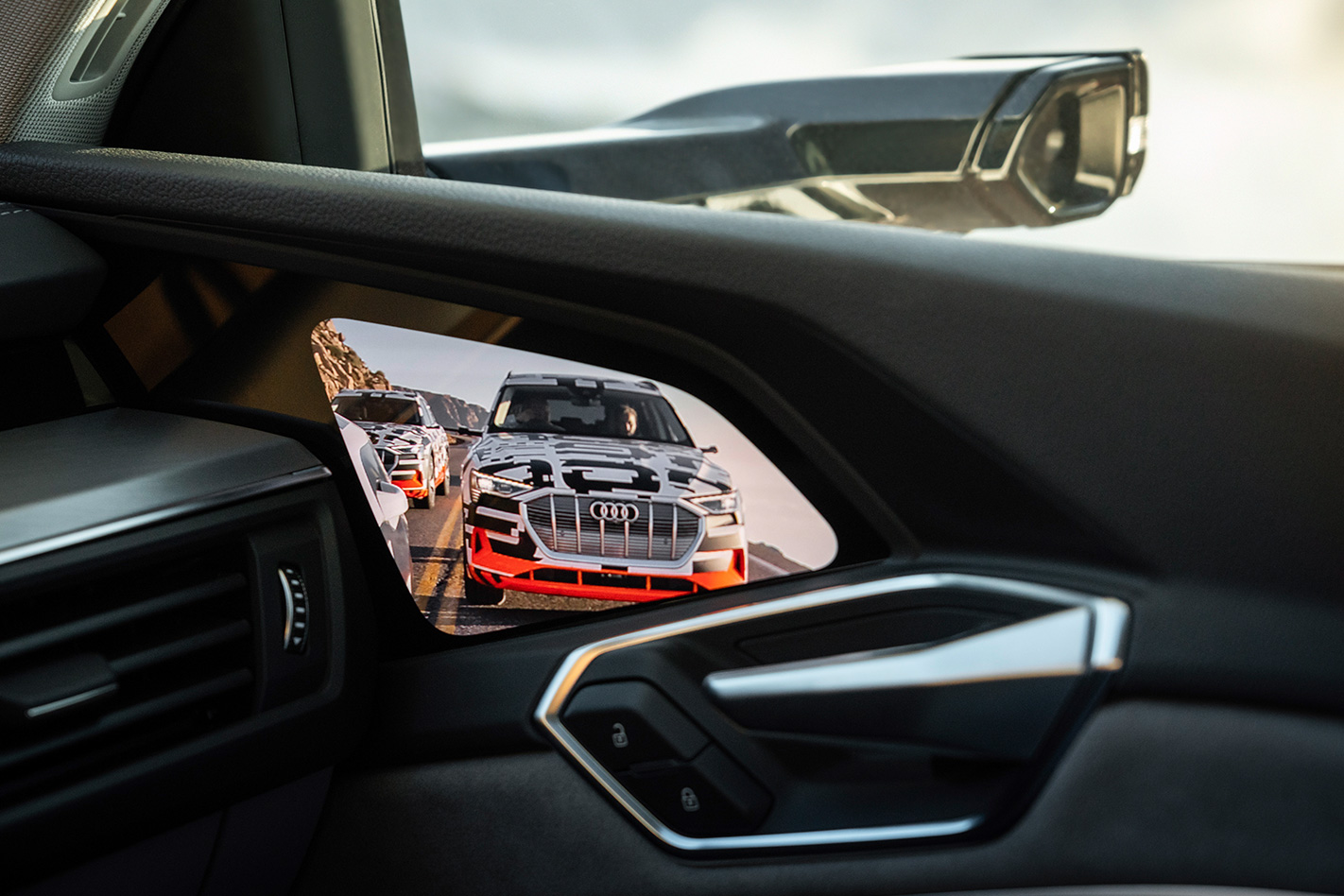
Our front rotors are barely five degrees above ambient at this point, registering 14 Celsius, or 58 Fahrenheit in the native tongue. “You don’t want to be above 300 [Fahrenheit/149 Celsius],” the lady tells us. “Otherwise you have to stop and let your brakes cool off. You’re good to go.”
There is no other system in the world quite like this one. One of the blokes responsible tells me there are 14,000 tuneable parameters in the braking system alone. In regular driving scenarios the E-Tron uses almost every supplementary system to maximise its efficiency. “No matter what the driver does, you always get the most amount of recuperation into the car,” says Roder.
Camera, radar and map data are used to analyse the road ahead, and the system can predictively distribute recuperation between the axles (but not individual wheels) to make it feel as natural as possible. At this point I wish I could feel it for myself. Audi claims this car’s completely decoupled brake pedal is a world first. The pedal is attached to nothing but a sensor that registers brake requests and a piece of elastic that simulates the sensation of a normal pedal. It’s done this way so that the system’s brain can blend the stopping power of recuperation and conventional calipers without the driver noticing.
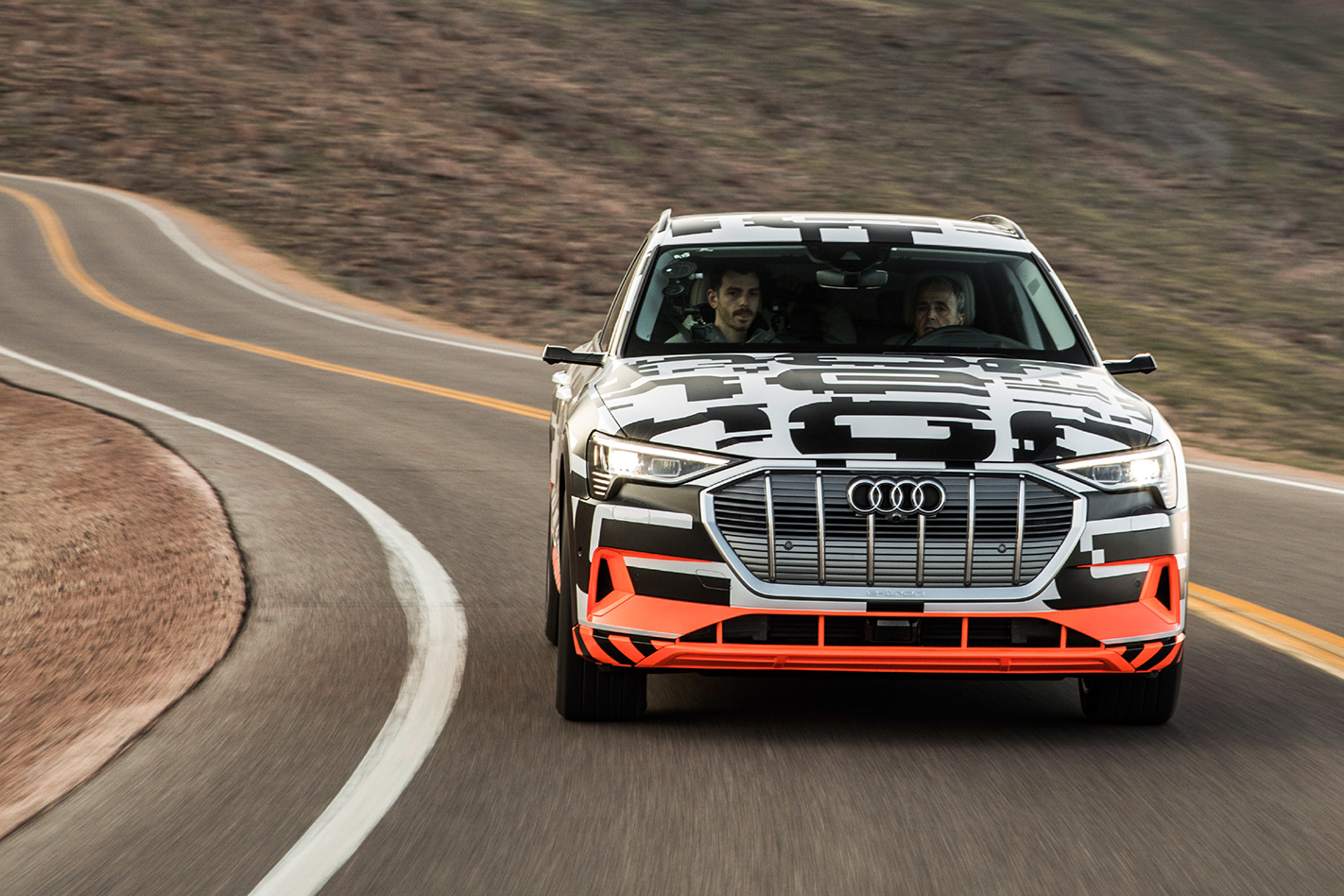
Below 10km/h it takes more energy to stop the car than it can recover, so the regular brakes step in. The hydraulic pump that operates the calipers is the most powerful Audi has ever used. Should the car spot a pedestrian, its AEB system can initiate an emergency stop, from detection to brake lock, within 150ms. That’s quicker than the blink of an eye.
By the time we reach the bottom we’ve covered a distance of almost 30km. At the top, the E-Tron’s state of charge was 58 percent, or just shy of 50kWh. Over the course of the descent its systems topped up the cells with almost 10kWh of recovered energy. There was very little throttle input, so only 2.6kWh was consumed in getting there, and we spent the rest of the trip generating energy using gravity. We finish with more than 57kWh in reserve.
These are bizarre, seemingly counterintuitive numbers to wrap your brain around. In real-world terms we extended the car’s range by at least a kilometre for every kilometre travelled.Of the four E-Trons taking part, our figures are second best. One other car that didn’t stop for photography managed to regenerate 12kWh. Though this exercise is obviously an extreme example to illustrate the system’s ultimate capability, the practical everyday benefits are there.
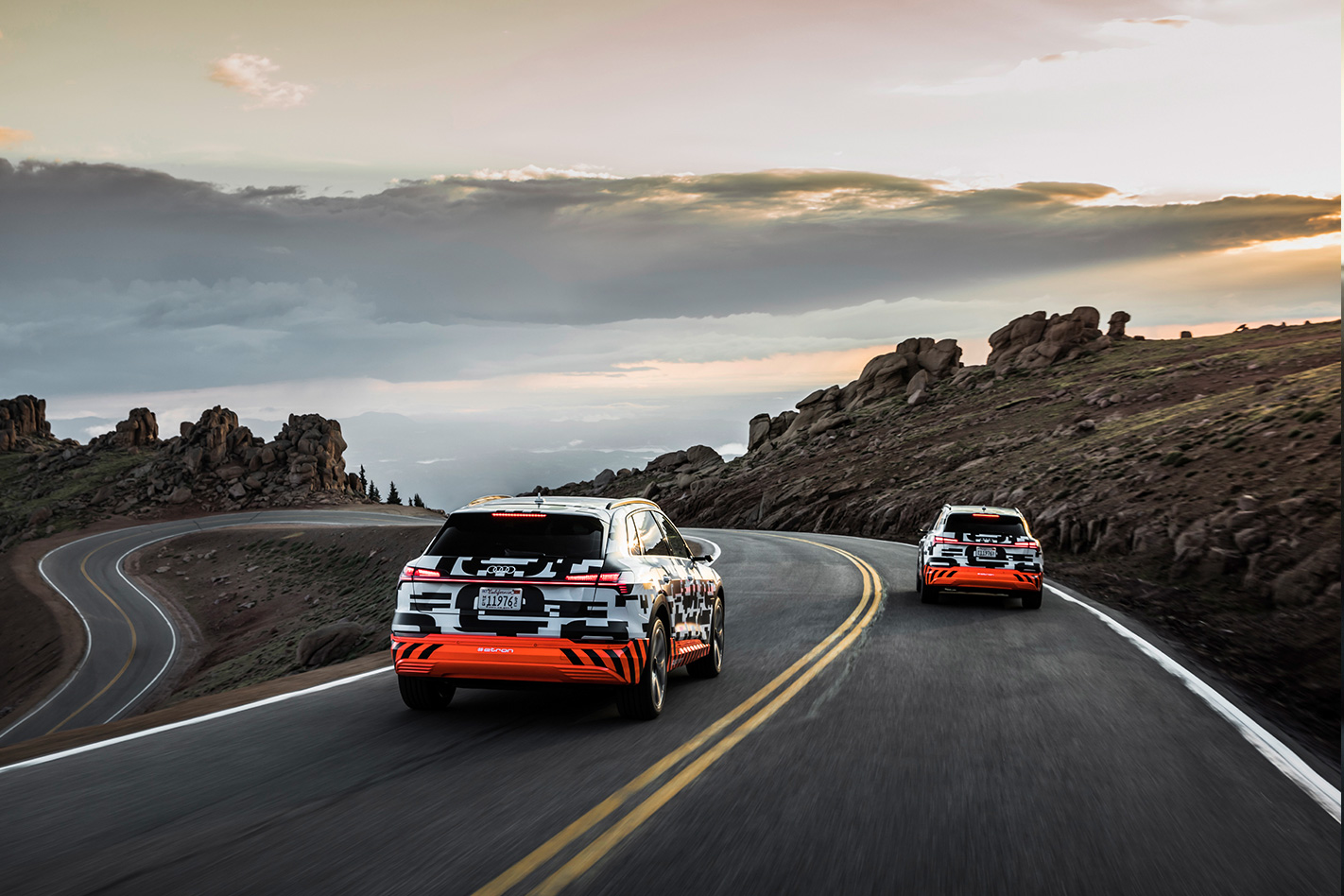
Audi says this system is easily transferable to future EVs and PHEVs. After E-Tron goes on sale a sportier version called the E-Tron Sportback will follow, riding on the same MLB Evo underpinnings. Two more Audi EVs are scheduled for 2020; a compact car built on shared architecture from the VW ID hatch, and the performance-focused E-Tron GT, which is expected to use the same platform as the Porsche Taycan (formerly Mission E). Volkswagen as a group has cleverly carved up its EV development using familiar synergies so that each brand tackles its own piece of the puzzle, and quickly.
What would normally have taken four or five years to develop according to one engineer, has been achieved in three, and with the promise of at least 20 electrified Audis by 2025, the E-Tron floodgates are fit to burst. Audi won’t be the first to market, but it’s poised to make an impact.

In a combustion engine car every brake application costs fuel. What is burnt in getting up to speed is lost, with nothing left to show for it. Efficient recovery of energy is a new proving ground for EV manufacturers, which is to say, all manufacturers hoping to survive. With no legacy to protect, the E-Tron enters the ring with nothing to lose, and the tools at its disposal could be game-changing.

